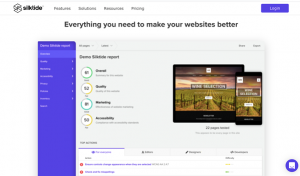The smartest companies are always looking to reach untapped markets. These days, most are finding success by engaging new global consumers through digital channels. By communicating with online customers in their languages of choice—on their devices of choice—businesses can sell to more markets than ever before.

Marketers can face challenges during such expansions, however. Campaigns and content that works for one market often doesn’t resonate with another. Indeed, to best engage global consumers, brands need more than online linguistic fluency. They also need cultural fluency.
This nuanced take on marketing isn’t easy to master, especially when marketers know very little about their new customers. But this approach really moves the needle in generating brand trust, engagement, conversions and revenue.
On Social Media
There are few digital channels better suited for showcasing a brand’s cultural fluency than social. Worldwide social media adoption rates remain sky-high. The global social media penetration rate is nearly one-third, or more than 2.2 billion active users worldwide. This will increase by nearly 25% in two years.
Mobile users in the Asia-Pacific region are driving much of this growth. East Asian markets lead the world in number of new Internet users, with South Asia coming in second.
This rapid adoption and activity can make a big difference for expanding companies. Social can help businesses quickly establish and maintain brand awareness and loyalty.
It’s a best practice for companies to translate their social media posts for new global markets. This practically eliminates any friction between a company’s content and a consumer finding—and sharing—it. This strategy delivers incremental traffic to a brand’s translated global site, which is a key to its success.
A major home-goods retailer recently required some help authentically connecting with consumers in the Middle East and North Africa (MENA). They benefited from a cultural fluency approach. Social media thrives in this predominantly-Muslim region, and it sees surges during holidays. In fact, Facebook and Twitter interactions can increase by up to one-third during Ramadan.
This company was making the right moves in these markets, but fell short in one key respect—its Arabic website’s “share to Facebook” functionality was pushing English-language product content to Facebook friends, creating a serious linguistic disconnect between the brand, its evangelistic fans, and their friends. The company replaced this English-language Open Graph metadata with Arabic content. Facebook referral traffic quickly grew by more than 1,410% during Ramadan.
Sticking with Ramadan for another moment, this holiday’s nature illustrates the importance of culturally-fluent marketing. Ramadan, the holiest month of the year for Muslims, requires celebrants to fast from sunrise to sunset. In many regions, this shifts work-day schedules in ways non-celebrants might not understand.
Indeed, the best times to engage these consumers via social and email marketing shifts, too. Celebrants go online at atypical times. According to metrics gleaned from the MENA-region Arabic sites during Ramadan in 2015, high numbers of sessions occurred at midnight, when many Ramadan celebrants were having sohor (late dinner). Other peak times included the end of the working day—which was around 2 p.m. during Ramadan.
Social media and digital marketers unfamiliar with this month-long change in consumer behavior will be trumpeting their companies’ wares at the wrong times.
Beyond MENA, a UK e-retailer recently reached new Japanese customers through its localized Japanese Facebook page. Translated social content really connects with target markets. Mere weeks after its debut, hundreds of Japanese users commented and shared their own posts on the Facebook page. Thousands more have liked posts and photos.
When another European company launched an e-commerce site to serve nearby Dutch customers, localized content for its in-market Facebook page really moved the needle. A targeted, in-language social media ad campaign also helped. More than 20,000 consumers visited the new Dutch site, contributing to a 100,000+ total visitor tally its first month in market.
Localizing social content works.
Conversion Rate Optimization
Cultural fluency is also especially effective in delivering authentic, native-friendly translations that greatly help companies’ conversion rate optimization (CRO) efforts. Just as with your primary-market English site, conducting market research—and understanding your users—is key to a winning global CRO strategy.
A U.S. telecom company’s localized Spanish e-commerce site was falling short on sales expectations, and required a closer look. The company’s primary-market English site featured an inelegant design for product sorting and selection—a shortcoming that was also reflected on the Spanish site. Users struggled to find smartphones they might like, or could afford.
After creating several UX split tests and monitoring the results, a design change was deployed to this section of the Spanish site. The CRO campaign provided shoppers with a selection of smartphones arranged by price, by default.
This seemingly-trivial change generated big results among cost-conscious consumers. Conversions grew 65%. In a CRO campaign for another company, slight variations in translation word choice generated a surge in conversion rates. By craftily thinking like your customers, you can communicate more effectively with them during checkout and secure revenue growth.
A final example of how cultural fluency can boost engagement and conversions: when the sales on a global airline client’s Korean site wasn’t keeping pace with sales in other markets, an investigation revealed why. The site’s homepage promotions didn’t “feel” like they’d been crafted by native copywriters.
Why? Korean websites often feature more text and details in their promotional imagery than is custom in Western markets. The absence of these details created a cultural disconnect; Korean consumers noticed.
After this content was tweaked, the site’s performance improved. Click-throughs grew by 15%. Checkouts rose nearly 45%. One promo saw a 30% jump in clicks and 69% increase in checkouts.
Wrapping Up
More traffic, engagement and conversions await companies and marketers willing to learn the cultural nuances of global markets. As your organization eyes new online markets, consider embracing this the ethos of cultural fluency—or partner with a website globalization partner that does.
Expertise in websites analytics and online user behavior is crucial for these global marketing endeavors. But a solid understanding of consumer thinking can make the biggest difference of all.
Business & Finance Articles on Business 2 Community
(55)
Report Post






